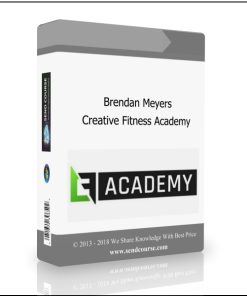Pharmacology for Rehabilitation Professionals – Suzanne Tinsley | Available Now !
$200.00 Original price was: $200.00.$56.00Current price is: $56.00.
Pharmacology for Rehabilitation Professionals – Suzanne Tinsley | INSTANTLY DOWNLOAD !
Understand How Your Patient’s Medications Affect Functional Outcomes
Many patients being referred to therapy are taking prescription and/or over-the-counter medications. Although many of these medications are directly related to their therapy diagnosis, some may not be. What should you know about clinical pharmacology to manage them effectively?
In this recording, rehab pharmacology expert, Dr. Suzanne Tinsley, examines the critical aspects of pharmacology, including the principles of pharmacodynamics and pharmacokinetics as well as how to apply these concepts to all drug classifications. You will discuss specific concepts of the pharmacology of the central nervous system and autonomic nervous system. You will analyze effects of drug actions on the major body systems, including mechanisms of therapeutic actions and adverse drug effects, problems involving drug interactions, and variables that modify drugs’ effects. Special consideration will be given to many of the drugs most commonly used in treating cardiovascular and neuro-musculoskeletal disorders. Using case reports, you will uncover specific effects that have an impact on the rehabilitation management of patients and clients.
- Describe the primary pharmacokinetic factors involved in drug administration, absorption, distribution, interaction, and elimination
- Explain how altered pharmacokinetics may lead to a decrease or an increase in drug effects, and how these effects may be recognized in patients receiving therapy
- Discuss the concepts of psychological and physical dependence, tolerance, withdrawal, receptor, sensitivity, and cross-tolerance
- Identify the general categories, mechanisms of action, risk-benefit ratio, and implications on physical therapy and occupational interventions for the pharmacological agents routinely prescribed for conditions involving the cardiovascular, neuromuscular, endocrine, pulmonary, and central nervous systems
- Analyze the possible effects of various drug actions on the effectiveness of physical therapy and occupational therapy interventions and functional outcomes
- List the five classes of cardiac medications, the side effects of these medications, and how these side effects may interfere with rehabilitation outcomes
PRINCIPLES OF PHARMACOLOGY
- Pharmacokinetic principles
- Pharmacodynamics principles
- Their importance to rehabilitation
PHARMACOLOGY OF THE CENTRAL NERVOUS SYSTEM
- Common CNS drugs seen in rehabilitation
- Sedative-hypnotics, anti-seizure meds, anti-depressant meds, Parkinson’s disease meds, etc.
- Side effects and rehabilitation outcomes
PATIENT ORIENTED PROBLEM SOLVING (POPS) CASE STUDY
PAIN MANAGEMENT – NARCOTICS, NONSTERIODAL, ANTI-INFLAMMATORY DRUGS
- Advantages and disadvantages of each class
- Common side effects and their effect on rehabilitation outcomes
- Signs and symptoms of abuse
CARDIAC MEDICATIONS
- 5 classes of cardiac medications
- Beta blockers, calcium channel blockers, ACE inhibitors, diuretics, & glycosides
- How these drugs are combined to treat cardiac disease/pathology
- Therapeutic effects and side effects that may interfere with rehabilitation outcomes
POPS CASE STUDIES
Tag: Pharmacology for Rehabilitation Professionals – Suzanne Tinsley Review. Pharmacology for Rehabilitation Professionals – Suzanne Tinsley download. Pharmacology for Rehabilitation Professionals – Suzanne Tinsley discount.
1 review for Pharmacology for Rehabilitation Professionals – Suzanne Tinsley | Available Now !
| 5 star | 100 | 100% |
| 4 star | 0% | |
| 3 star | 0% | |
| 2 star | 0% | |
| 1 star | 0% |
Sorry, no reviews match your current selections
Q & A
Ask a question
Your question will be answered by a store representative or other customers.
Thank you for the question!
Your question has been received and will be answered soon. Please do not submit the same question again.
Error
An error occurred when saving your question. Please report it to the website administrator. Additional information:
Add an answer
Thank you for the answer!
Your answer has been received and will be published soon. Please do not submit the same answer again.
Error
An error occurred when saving your answer. Please report it to the website administrator. Additional information:
Related products
NLP & Hypnosis
Ecommerce
NLP & Hypnosis
Ecommerce
Ecommerce












Great purchase, item as described, fast delivery | Pharmacology for Rehabilitation Professionals – Suzanne Tinsley